The Dragon Tree are so impressive that when the first navigators discovered them on the Canary Islands they thought they had to do with the dragon, that is to say the devil; this impression was reinforced when they saw that a blood-red sap was flowing from the trunk. Botanists therefore gave the genus the name of Dracaena which would come from the Greek “drakaina“, “female of the dragon”.
The genus has about forty species, most of them originating from tropical Africa and Asia. Dracaena draco is the Dragon Tree of the Canaries, emblem of these islands where, it is said, some individuals are more than 2500 years old. In the Middle Ages, the fumes of the incense made with the sap, the “blood-dragon”, attracted recalcitrant lovers and pushed fickle husbands to return to their homes.
In Laos there are many Dragon trees or Dracenas, some are horticultural, they are found cultivated in gardens, others are spontaneous in forests.
Renowned for their beautiful, often variegated foliage, most adult Dracaena are upright shrubs that do not branch. Their lanceolate, arching leaves arise from the tops of tall, bare stems and make them look like palm trees.
The most common in gardens is Dracaena fragrans with long clusters of small whitish or pink flowers that smell so good in the evening when the nights get cooler. It is called wasana in thaï and vatsana in lao. It grows very easily, especially in height, and it is said that when it exceeds the wall of the garden or the roof of the house happiness will settle in the family.
Les Dragonniers sont tellement impressionnants que lorsque les premiers navigateurs les découvrirent sur les Iles Canaries ils pensèrent qu’ils avaient à voir avec le dragon, c’est-à-dire le diable; cette impression fut renforcée lorsqu’ils virent que s’écoulait du tronc une sève rouge comme le sang. Les botanistes donnèrent donc au genre le nom de Dracaena qui viendrait du grec “drakaina“, « femelle du dragon ».
Le genre compte une quarantaine d’espèces la plupart originaires d’Afrique tropicale et d’Asie. Dracaena draco est le dragonnier des Canaries (Dragontree en anglais), emblème des ces îles où, dit-on, certains individus ont plus de 2500 ans. Au Moyen Âge, les fumées de l’encens fabriqué avec la sève, le « sang-dragon », attiraient les amants récalcitrants et poussaient les maris volages à retourner dans leur foyer.
Au Laos il y a de nombreux Dragonniers ou Dracénas, les uns sont horticoles, on les trouve cultivés dans les jardins, les autres sont spontanés dans les forêts.
Renommés pour leur beau feuillage souvent panaché, la plupart des Dracénas adultes sont des arbustes érigés qui ne se ramifient pas. Leurs feuilles lancéolées et arquées naissent au sommet de hautes tiges nues et les font ressembler à des palmiers.
Le plus courant dans les jardins est le Dracaena fragrans aux longues grappes de petites fleurs blanchâtres ou roses qui sentent si bon le soir quand les nuits se rafraîchissent. On le nomme wasana en thaï et vatsana en lao. Il pousse très facilement, surtout en hauteur, et l’on dit que lorsqu’il dépasse le mur du jardin ou le toit de la maison le bonheur va s’installer dans la famille.
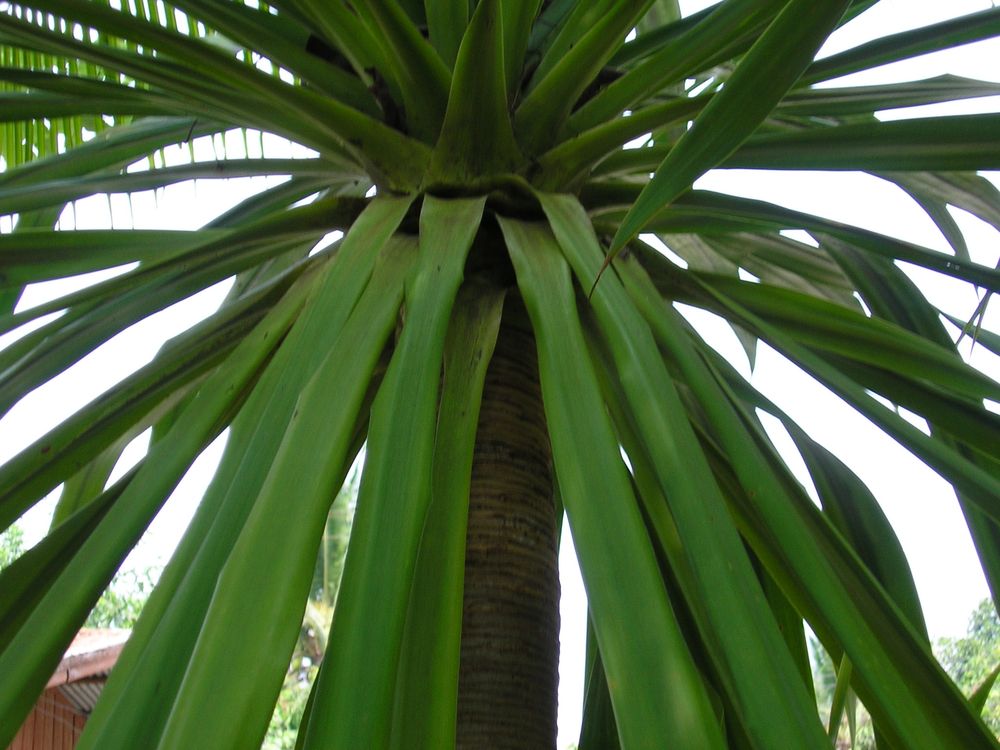
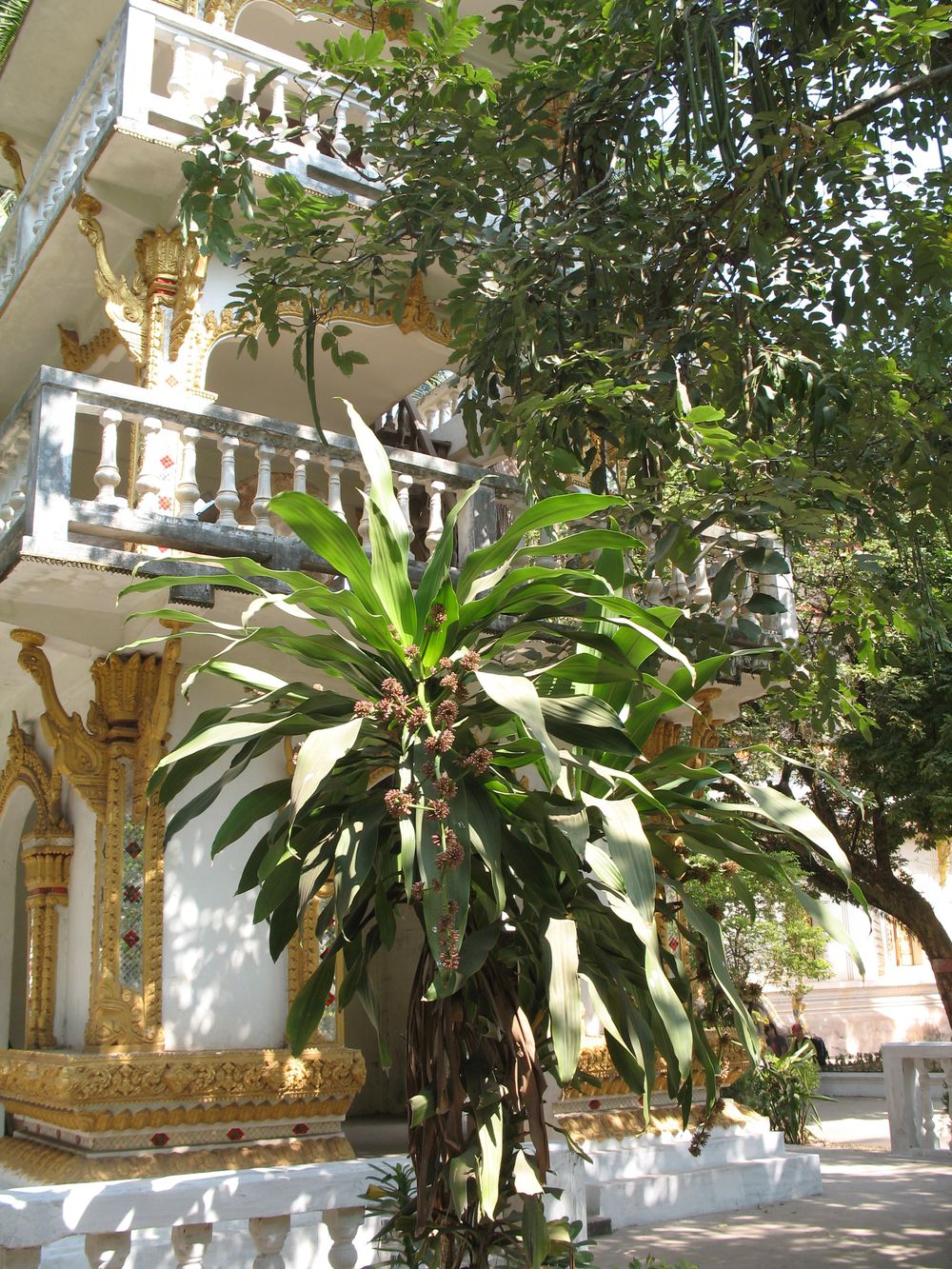
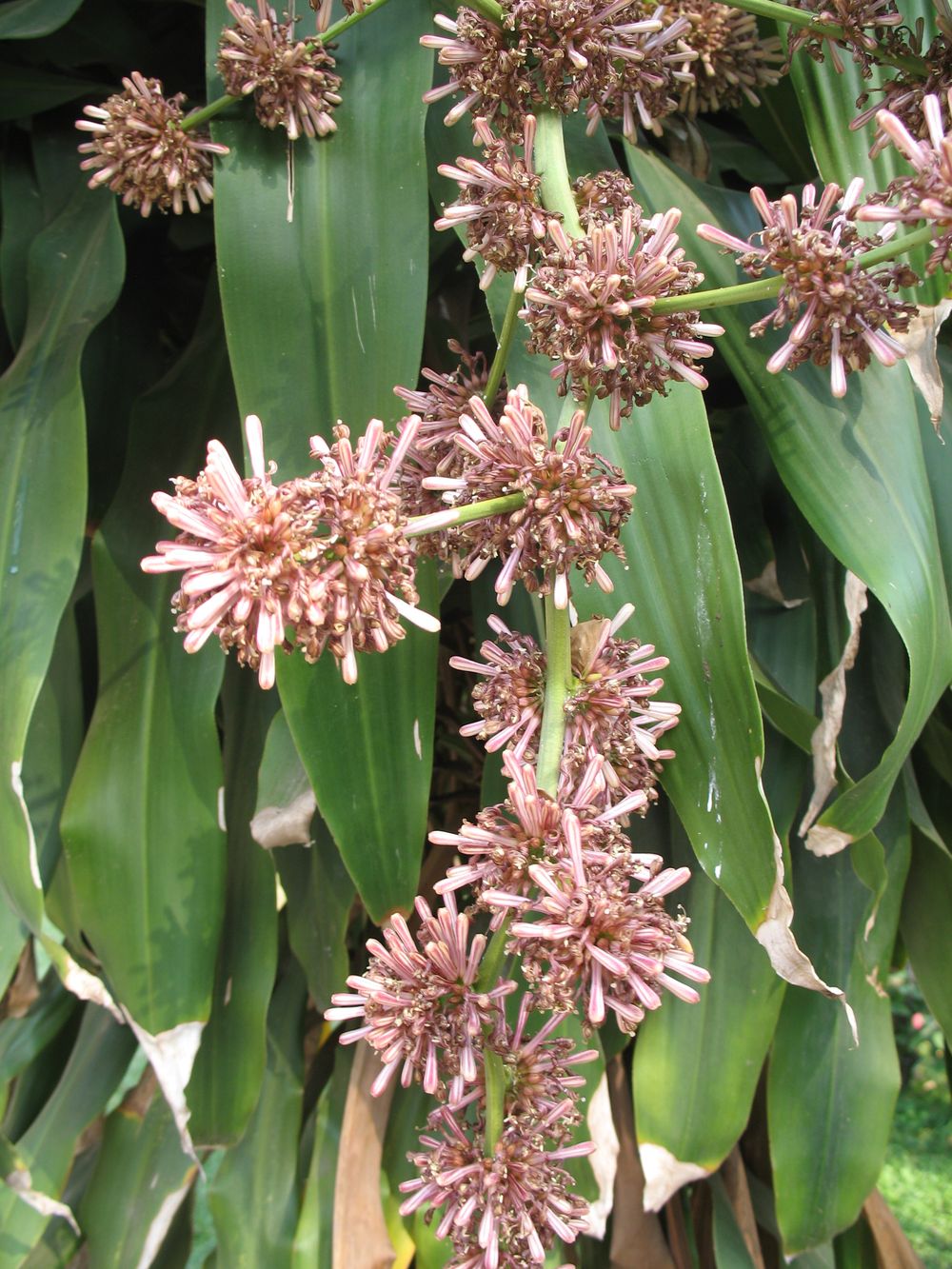
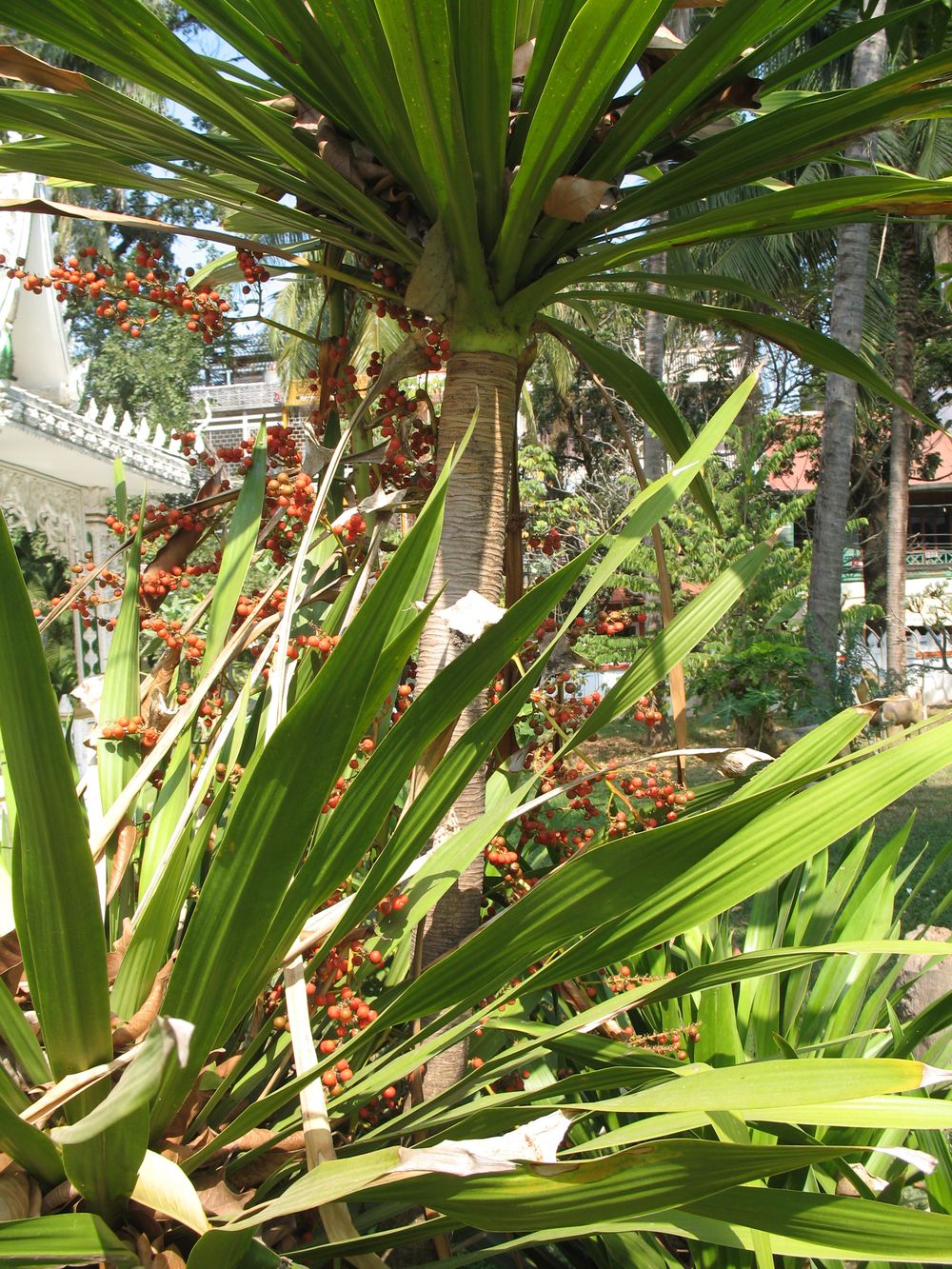
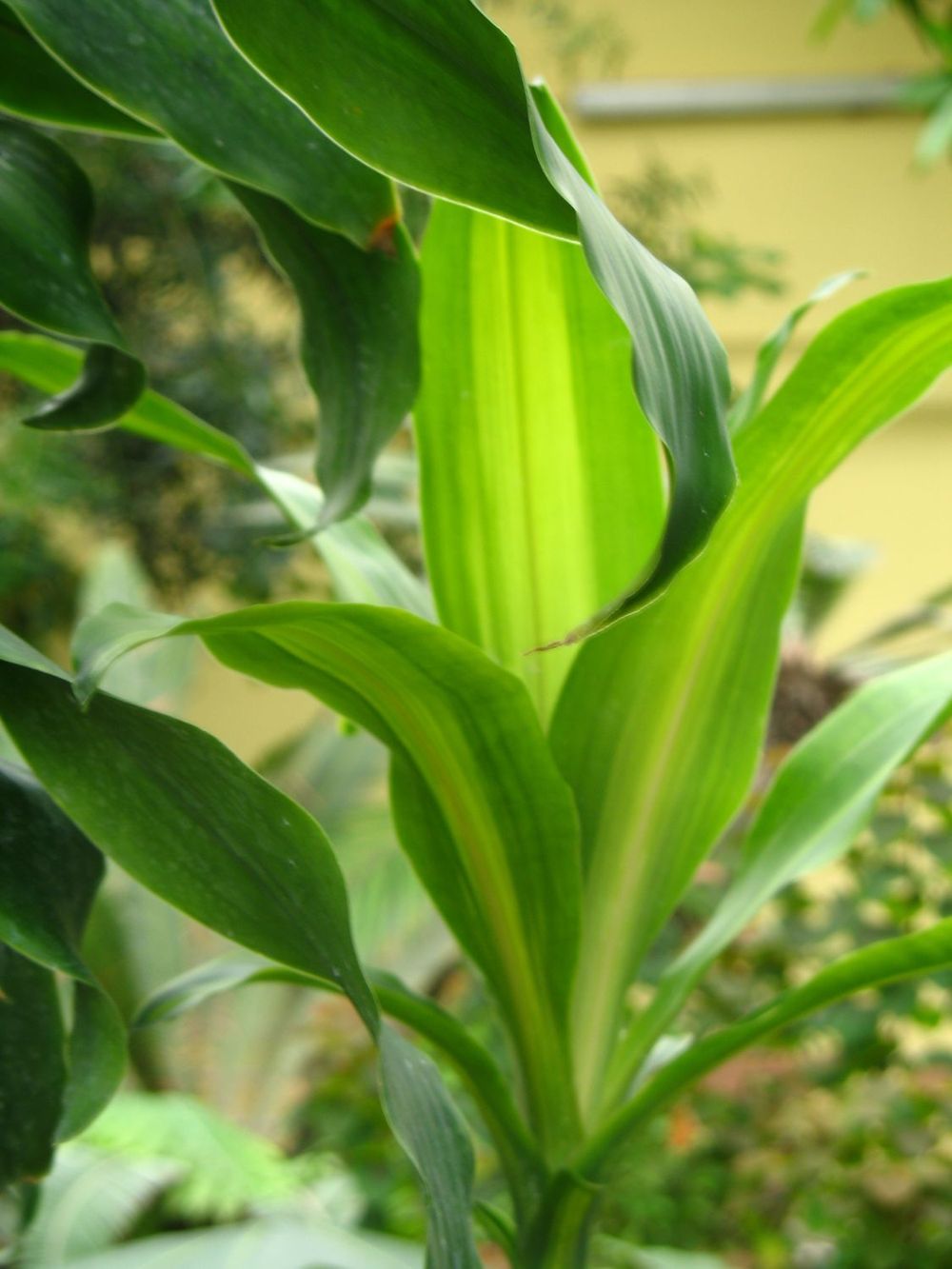
The Dragon Tree are so impressive that when the first navigators discovered them on the Canary Islands they thought they had to do with the dragon, that is to say the devil; this impression was reinforced when they saw that a blood-red sap was flowing from the trunk. Botanists therefore gave the genus the name of Dracaena which would come from the Greek “drakaina“, “female of the dragon”.
The genus has about forty species, most of them originating from tropical Africa and Asia. Dracaena draco is the Dragon Tree of the Canaries, emblem of these islands where, it is said, some individuals are more than 2500 years old. In the Middle Ages, the fumes of the incense made with the sap, the “blood-dragon”, attracted recalcitrant lovers and pushed fickle husbands to return to their homes.
In Laos there are many Dragon trees or Dracenas, some are horticultural, they are found cultivated in gardens, others are spontaneous in forests.
Renowned for their beautiful, often variegated foliage, most adult Dracaena are upright shrubs that do not branch. Their lanceolate, arching leaves arise from the tops of tall, bare stems and make them look like palm trees.
The most common in gardens is Dracaena fragrans with long clusters of small whitish or pink flowers that smell so good in the evening when the nights get cooler. It is called wasana in thaï and vatsana in lao. It grows very easily, especially in height, and it is said that when it exceeds the wall of the garden or the roof of the house happiness will settle in the family.
Les Dragonniers sont tellement impressionnants que lorsque les premiers navigateurs les découvrirent sur les Iles Canaries ils pensèrent qu’ils avaient à voir avec le dragon, c’est-à-dire le diable; cette impression fut renforcée lorsqu’ils virent que s’écoulait du tronc une sève rouge comme le sang. Les botanistes donnèrent donc au genre le nom de Dracaena qui viendrait du grec “drakaina“, « femelle du dragon ».
Le genre compte une quarantaine d’espèces la plupart originaires d’Afrique tropicale et d’Asie. Dracaena draco est le dragonnier des Canaries (Dragontree en anglais), emblème des ces îles où, dit-on, certains individus ont plus de 2500 ans. Au Moyen Âge, les fumées de l’encens fabriqué avec la sève, le « sang-dragon », attiraient les amants récalcitrants et poussaient les maris volages à retourner dans leur foyer.
Au Laos il y a de nombreux Dragonniers ou Dracénas, les uns sont horticoles, on les trouve cultivés dans les jardins, les autres sont spontanés dans les forêts.
Renommés pour leur beau feuillage souvent panaché, la plupart des Dracénas adultes sont des arbustes érigés qui ne se ramifient pas. Leurs feuilles lancéolées et arquées naissent au sommet de hautes tiges nues et les font ressembler à des palmiers.
Le plus courant dans les jardins est le Dracaena fragrans aux longues grappes de petites fleurs blanchâtres ou roses qui sentent si bon le soir quand les nuits se rafraîchissent. On le nomme wasana en thaï et vatsana en lao. Il pousse très facilement, surtout en hauteur, et l’on dit que lorsqu’il dépasse le mur du jardin ou le toit de la maison le bonheur va s’installer dans la famille.










The Dragon Tree are so impressive that when the first navigators discovered them on the Canary Islands they thought they had to do with the dragon, that is to say the devil; this impression was reinforced when they saw that a blood-red sap was flowing from the trunk. Botanists therefore gave the genus the name of Dracaena which would come from the Greek “drakaina“, “female of the dragon”.
The genus has about forty species, most of them originating from tropical Africa and Asia. Dracaena draco is the Dragon Tree of the Canaries, emblem of these islands where, it is said, some individuals are more than 2500 years old. In the Middle Ages, the fumes of the incense made with the sap, the “blood-dragon”, attracted recalcitrant lovers and pushed fickle husbands to return to their homes.
In Laos there are many Dragon trees or Dracenas, some are horticultural, they are found cultivated in gardens, others are spontaneous in forests.
Renowned for their beautiful, often variegated foliage, most adult Dracaena are upright shrubs that do not branch. Their lanceolate, arching leaves arise from the tops of tall, bare stems and make them look like palm trees.
The most common in gardens is Dracaena fragrans with long clusters of small whitish or pink flowers that smell so good in the evening when the nights get cooler. It is called wasana in thaï and vatsana in lao. It grows very easily, especially in height, and it is said that when it exceeds the wall of the garden or the roof of the house happiness will settle in the family.
Les Dragonniers sont tellement impressionnants que lorsque les premiers navigateurs les découvrirent sur les Iles Canaries ils pensèrent qu’ils avaient à voir avec le dragon, c’est-à-dire le diable; cette impression fut renforcée lorsqu’ils virent que s’écoulait du tronc une sève rouge comme le sang. Les botanistes donnèrent donc au genre le nom de Dracaena qui viendrait du grec “drakaina“, « femelle du dragon ».
Le genre compte une quarantaine d’espèces la plupart originaires d’Afrique tropicale et d’Asie. Dracaena draco est le dragonnier des Canaries (Dragontree en anglais), emblème des ces îles où, dit-on, certains individus ont plus de 2500 ans. Au Moyen Âge, les fumées de l’encens fabriqué avec la sève, le « sang-dragon », attiraient les amants récalcitrants et poussaient les maris volages à retourner dans leur foyer.
Au Laos il y a de nombreux Dragonniers ou Dracénas, les uns sont horticoles, on les trouve cultivés dans les jardins, les autres sont spontanés dans les forêts.
Renommés pour leur beau feuillage souvent panaché, la plupart des Dracénas adultes sont des arbustes érigés qui ne se ramifient pas. Leurs feuilles lancéolées et arquées naissent au sommet de hautes tiges nues et les font ressembler à des palmiers.
Le plus courant dans les jardins est le Dracaena fragrans aux longues grappes de petites fleurs blanchâtres ou roses qui sentent si bon le soir quand les nuits se rafraîchissent. On le nomme wasana en thaï et vatsana en lao. Il pousse très facilement, surtout en hauteur, et l’on dit que lorsqu’il dépasse le mur du jardin ou le toit de la maison le bonheur va s’installer dans la famille.


